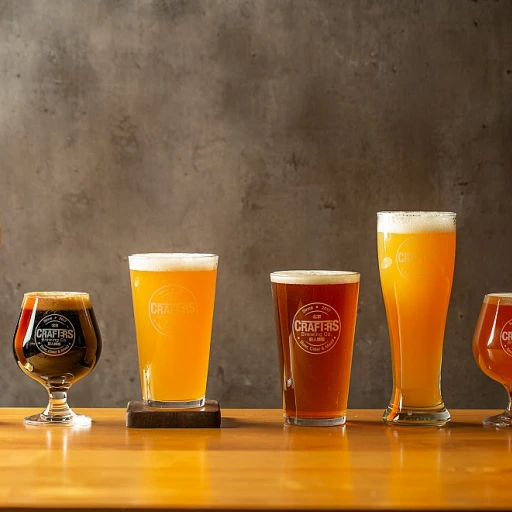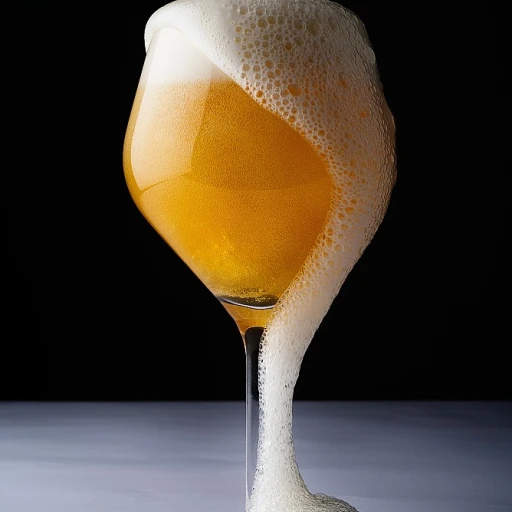
The Basics of Ale and Beer
Ale versus Beer: What Sets Them Apart
When diving into the world of ales and beers, it's important to acknowledge the overarching category they both belong to—beer. Yes, ale is a kind of beer, but not all beers are ales. The main difference lies in the fermentation process, which affects their characteristics and ultimately guides the immense diversity found within the beer category. A typical beer can be classified as either an ale or a lager, with each having their distinctive fermentation techniques and yeast strains. The resulting flavors and textures certainly contribute to their varied appeal among beer enthusiasts. As we progress, we'll dive deeper into the aspects of fermentation processes, flavor profiles, and even popular styles. Understanding what makes ales distinct from other beers is crucial not only for selecting a beverage that suits your taste but also for appreciating various brewing methods and beer styles. To explore diverse ales, like IPAs or even non-alcoholic options like Brooklyn Special Effects IPA, exploring the Brooklyn Special Effects IPA might provide insights into this fascinating section of the beer landscape.Fermentation Process: Ale vs. Beer
The Fermentation Journey: How Ale and Beer Differ
Understanding the fermentation process is key to appreciating the nuances between ale and beer. Although often grouped together, these beverages embark on distinct fermentation journeys that define their characteristics.- Top vs. Bottom Fermentation: The primary distinction lies in the type of fermentation. Ales are typically created using top-fermenting yeast, which works best in warmer temperatures. This method promotes quicker fermentation, yielding a rich and complex flavor profile. In contrast, beers like lagers use bottom-fermenting yeast, thriving in cooler conditions and leading to a cleaner and crisper taste.
- Fermentation Time and Temperature: Time and temperature play significant roles in fermentation. Ales ferment at higher temperatures, usually between 60-75°F (15-24°C), allowing for faster processing that can take just a few days. On the other hand, beers using bottom fermentation often require weeks, if not months, at lower temperatures around 35-55°F (2-13°C).
- Alcohol Content: The fermentation process also impacts alcohol content. Top-fermenting yeasts used in ales generally yield higher alcohol levels compared to bottom-fermenting yeasts of typical beers.
Flavor Profiles and Styles
Unveiling the Taste: Comparing Ale and Beer Flavors
When it comes to savoring a cold one, the distinction in flavor between ale and beer can make all the difference in your drinking experience. If you've ever wondered why certain beers have a fruity note while others deliver a robust punch, the answer lies in their fermentation process. Ales are known for their fruitier, full-bodied flavors, often featuring a wide array of taste profiles due to the higher temperature at which they ferment. This environment allows yeast to produce more esters and phenols, resulting in a richer spectrum of flavors ranging from spicy to floral. On the other hand, beers such as lagers, fermented at cooler temperatures, usually offer cleaner, crisper, and milder taste profiles. This controlled environment tempers the yeast activity, leading to less complexity compared to ales but often enhancing the purity of flavors, which can focus more on malt and hop characteristics. For example, a traditional lager may highlight a biscuity maltiness with smooth hop bitterness. Exploring Styles- Ales can range from the hoppy bitterness of a pale ale, to the sweet maltiness of a brown ale, or even the roasted, chocolatey notes found in a stout.
- Lager styles include the light, refreshing flavors of a pilsner or the darker, caramelized notes of a bock.
Popular Ale and Beer Styles
Embrace the World of Ales and Beers
Diving into the category of popular ales and beers can be an exhilarating journey. Each style has its own unique characteristics that contribute to the wide spectrum of flavors and aromas appreciated by beer enthusiasts.
Iconic Ale Styles
- Pale Ale: Known for its balance between malt and hops, pale ales often have a slightly fruity aroma with a earthy finish.
- Indian Pale Ale (IPA): Boasting a bold hop flavor and a higher alcohol content, IPAs are very popular for their complex and aromatic profiles.
- Porter: This dark ale style offers a rich, roasted malt flavor and is perfect for those who enjoy a smooth, chocolatey finish.
- Stout: Known for its deep, dark color and creamy texture, stouts often carry flavors such as coffee, chocolate, and caramel.
Bestselling Beer Varieties
- Lager: A clean, crisp flavor with a refreshing finish makes lagers a go-to option for many beer drinkers. Their smoother mouthfeel comes from the longer fermentation process.
- Pilsner: A type of pale lager that is characterized by its golden color and well-hopped taste, pilsners are known for their refreshing quality.
- Wheat Beer: Typically unfiltered with a hazy appearance, wheat beers are often light and fruity, ideal for warm weather sipping.
- Bock: A strong lager beer that offers a sweet, malty flavor with slight hints of caramel and toasted notes.
Whether you're trying to pair beers with your meals or simply exploring your taste preferences, understanding these popular styles will help guide you in choosing the right brew for any occasion. Dive deeper into the fascinating world of brewing by continuing your exploration of understanding the difference between beer and ale.
Choosing the Right Brew for You
How to Select the Perfect Brew for Your Taste
Choosing the right beer can be as enjoyable as sipping your favorite brew. However, understanding the nuances can make all the difference in finding the perfect match for your palate. Here's a friendly guide to help you make the right selection based on the insights we've explored.- Consider the Fermentation Method: Take note of whether a brew is an ale or a lager. If you prefer a more robust and fruity flavor, an ale would likely suit your taste due to its warm fermentation process. If you enjoy crisp and smooth beers, a lager might be more your thing.
- Flavor Preferences Matter: Reflect on the flavor profiles that delight you. Are you inclined towards a malty sweetness or a hop-forward bitterness? Understanding these preferences can guide you in exploring different ale and beer styles.
- Explore Different Styles: With a myriad of styles to choose from, don't hesitate to sample various options. Whether it's a refreshing pale ale on a hot day or a rich stout on a cozy evening, there's an ale or beer for every occasion.
- Mind the Occasion: The context in which you enjoy your beer can also influence your choice. A casual get-together might call for a session ale, while a celebratory moment may be enhanced by a robust and complex beer.
- Be Open to Experimentation: The world of ales and beers offers endless opportunities for discovery. Don't be afraid to step out of your comfort zone and try something new—it might become your next favorite!













